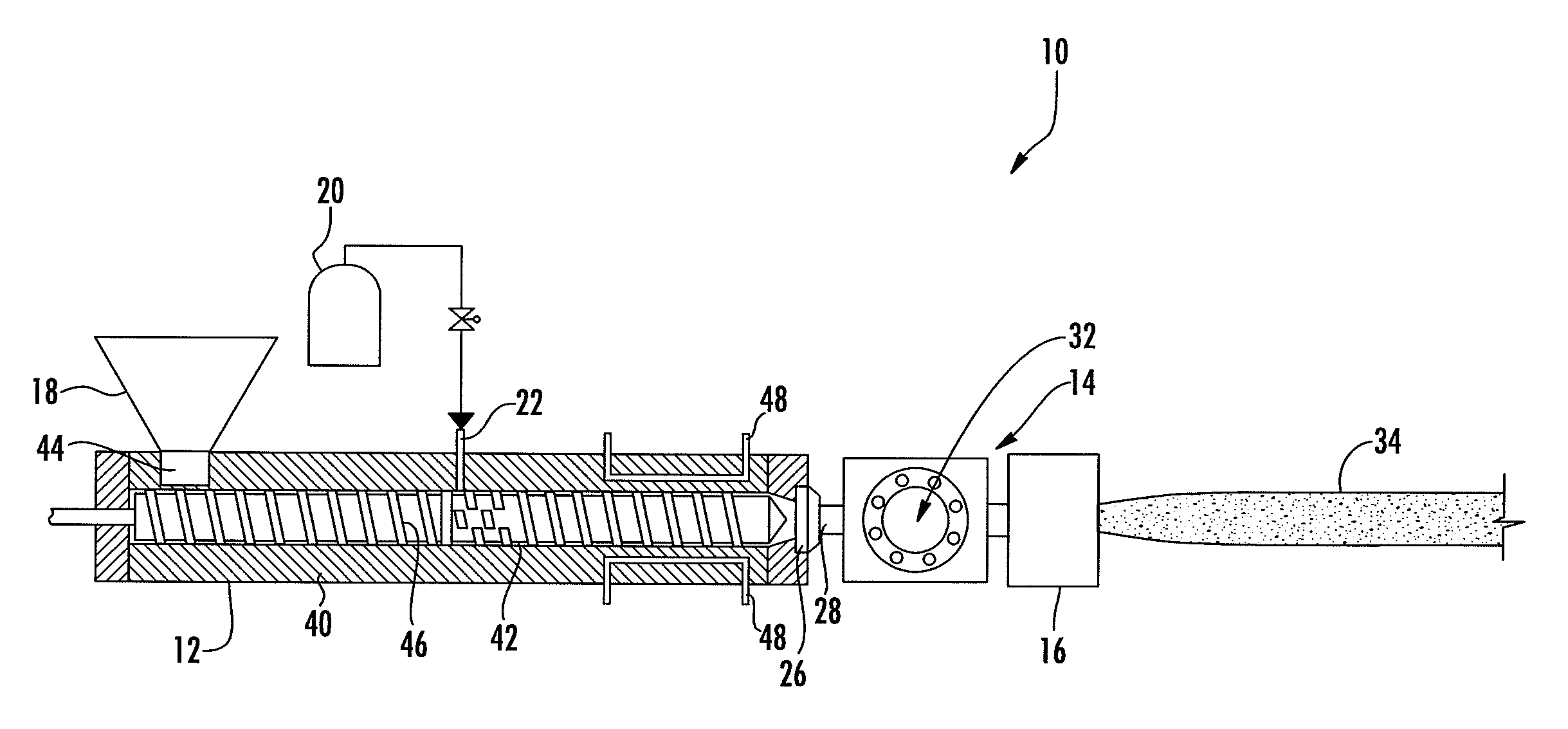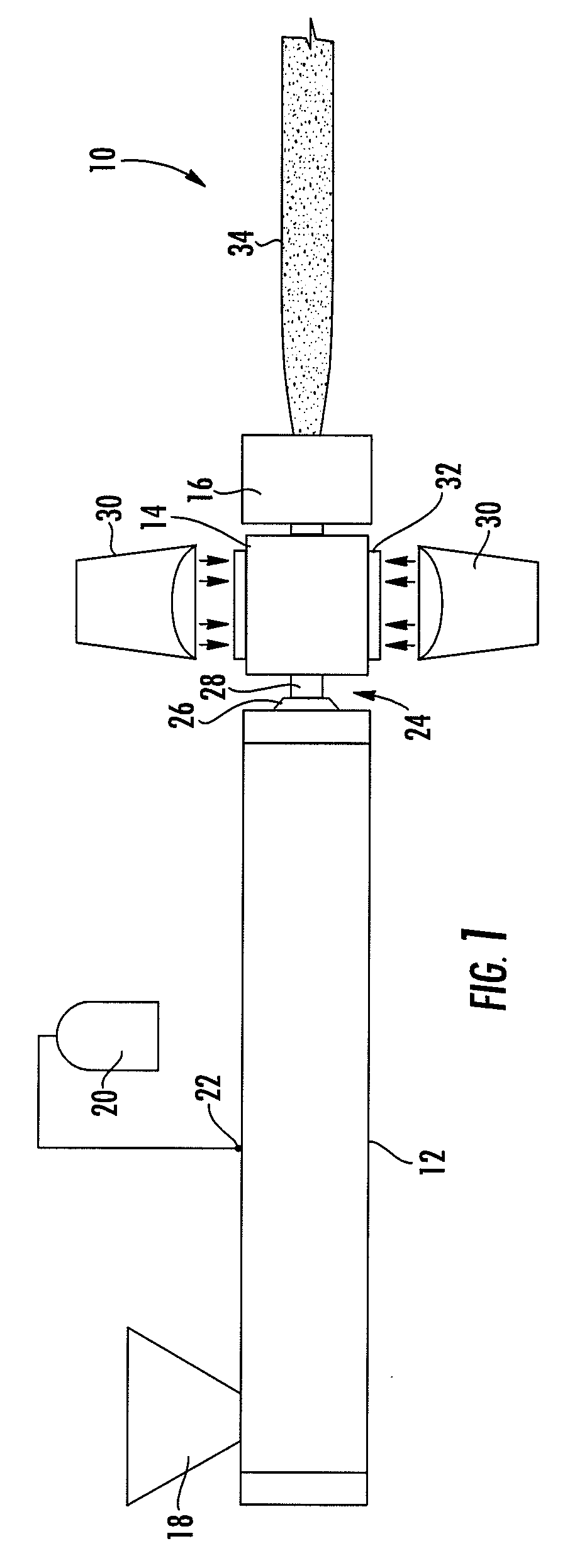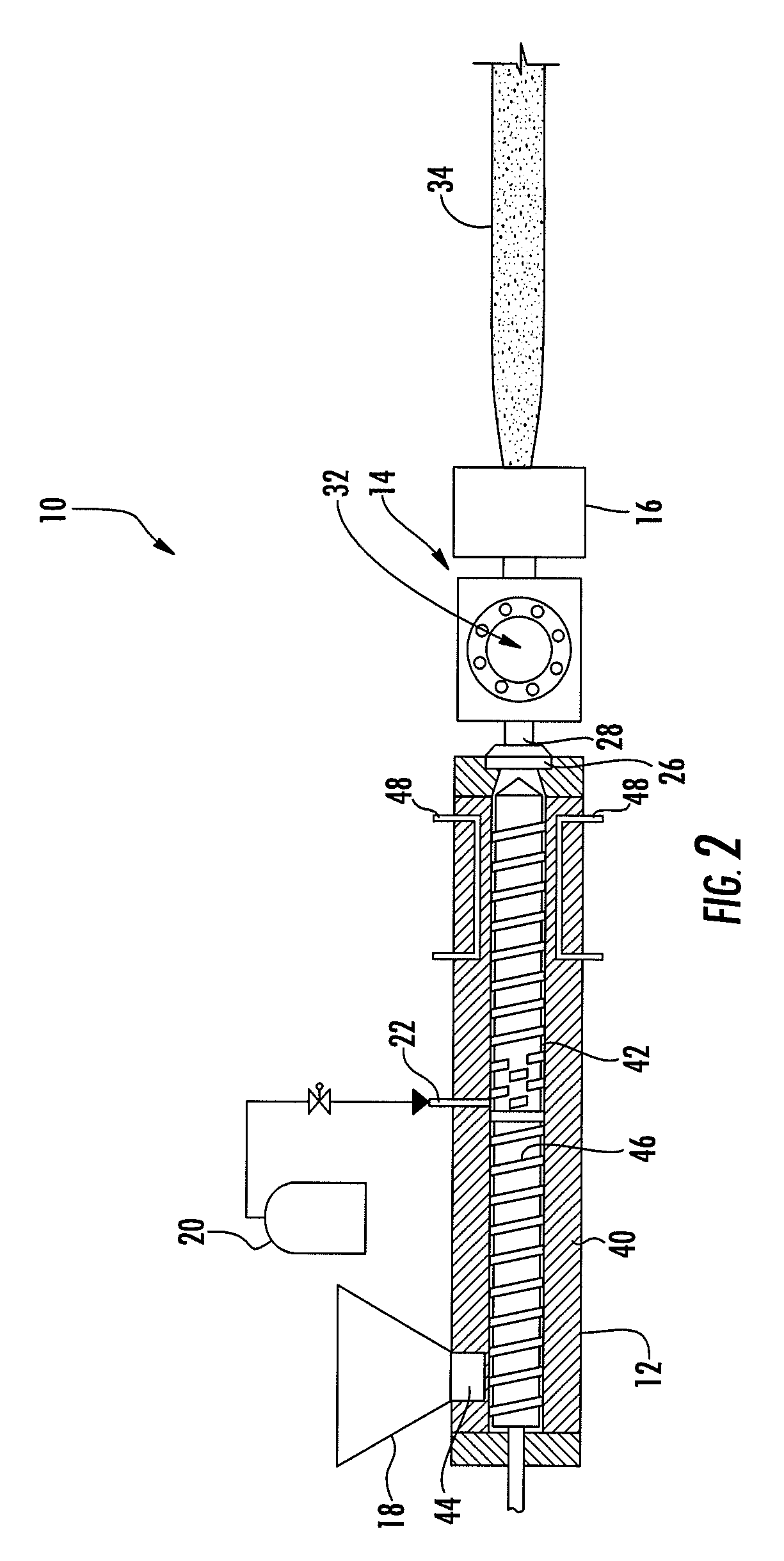Apparatus and Method for Preparing a UV-Induced Crosslinked Foam
a cross-linked foam and apparatus technology, applied in laboratory apparatus, chemistry apparatus and processes, enclosures/chambers, etc., can solve the problems of long cross-linking time, relatively poor melt strength of polyethylene, and relatively complicated process requirements
- Summary
- Abstract
- Description
- Claims
- Application Information
AI Technical Summary
Benefits of technology
Problems solved by technology
Method used
Image
Examples
examples
[0048]A Haake co-rotating twin-screw extruder was used to blend LDPE (2.3 MI, 0.918 g / cc density) with 1% benzophenone and 3% zinc acrylate (both available from Sigma-Aldrich) at 289° F. Then, the blend was extruded with talc and glycerol monostearate (GMS) aging modifier using a Leistritz 34 mm co-rotating twin-screw extruder (L / D ratio=40 to 1). The extruder was equipped with a capillary die having a diameter of 2 mm. Isobutane was used as the foaming agent to produce the foam samples. The typical melt temperature of the foam was 230° F. The results are shown in the Table 1 below:
TABLE 1Sample Extrusion Parameters and Foam PropertiesOutputIsobutaneDieCell CountHi loading MIrateRatePressureTorqueDensity(MD / cMD)%(190° C., 21.6 kg)Sample(lb / hour)(lb / hr.)(PSI)(NM)(pcf)(# / inch)elongation(g / 10 min.)18.840.483336165.8744 / 4210831.8528.840.4837501619.1536 / 2629N / M*38.840.483770167.5845 / 453112.9948.840.483670166.2560 / 555620.2458.840.483472166.345 / 347630.0668.840.48351016.56.4843 / 327317.6078....
PUM
| Property | Measurement | Unit |
|---|---|---|
| temperatures | aaaaa | aaaaa |
| thick | aaaaa | aaaaa |
| wavelength range | aaaaa | aaaaa |
Abstract
Description
Claims
Application Information
 Login to View More
Login to View More - R&D
- Intellectual Property
- Life Sciences
- Materials
- Tech Scout
- Unparalleled Data Quality
- Higher Quality Content
- 60% Fewer Hallucinations
Browse by: Latest US Patents, China's latest patents, Technical Efficacy Thesaurus, Application Domain, Technology Topic, Popular Technical Reports.
© 2025 PatSnap. All rights reserved.Legal|Privacy policy|Modern Slavery Act Transparency Statement|Sitemap|About US| Contact US: help@patsnap.com



